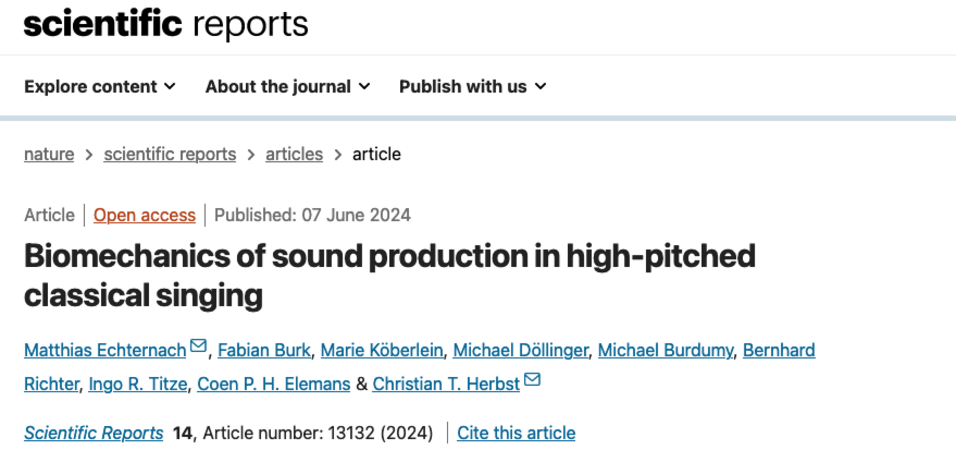Abstract
Voice production of humans and most mammals is governed by the MyoElastic-AeroDynamic (MEAD) principle, where an air stream is modulated by self-sustained vocal fold oscillation to generate audible air pressure fluctuations. An alternative mechanism is found in ultrasonic vocalizations of rodents, which are established by an aeroacoustic (AA) phenomenon without vibration of laryngeal tissue. Previously, some authors argued that high-pitched human vocalization is also produced by the AA principle. Here, we investigate the so-called “whistle register” voice production in nine professional female operatic sopranos singing a scale from C6 (≈ 1047 Hz) to G6 (≈ 1568 Hz). Super-high-speed videolaryngoscopy revealed vocal fold collision in all participants, with closed quotients from 30 to 73%. Computational modeling showed that the biomechanical requirements to produce such high-pitched voice would be an increased contraction of the cricothyroid muscle, vocal fold strain of about 50%, and high subglottal pressure. Our data suggest that high-pitched operatic soprano singing uses the MEAD mechanism. Consequently, the commonly used term “whistle register” does not reflect the physical principle of a whistle with regard to voice generation in high pitched classical singing.

